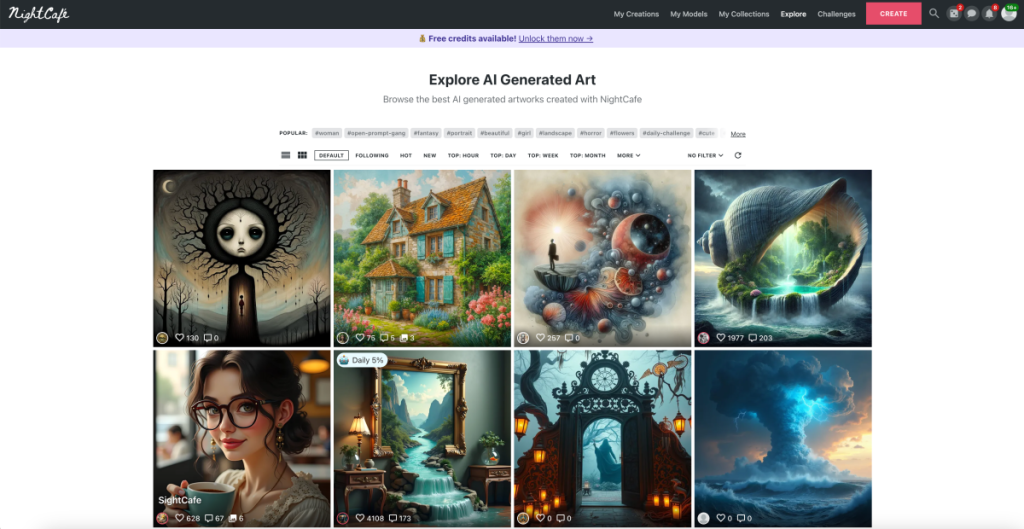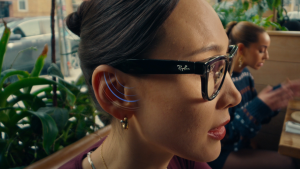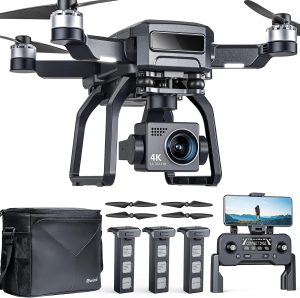Before Midjourney there was NightCafe and its still kicking

NightCafe, a pioneering image generation platform, quietly thrives amidst the shadows of its more publicized rivals. The platform’s low-profile strategy hasn’t stopped it from amassing over 25 million users who have created nearly a billion images.
A humble beginning
NightCafe originated from a simple idea. Angus Russell, in 2019, was frustrated by the lack of appealing art to decorate his Sydney home. Leveraging his design background, he created a website to buy and sell AI-generated art. Initially, the venture struggled as users loved creating art but were reluctant to pay for prints.
One week, hosting costs skyrocketed due to excessive image generation. This led Angus to implement a credit system. The result? NightCafe became break-even overnight. Elle Russell then joined to manage the business aspects, bringing her extensive background in business and communications.
NightCafe’s viral success
The platform saw exponential growth in mid-2021 with the announcement of OpenAI’s DALL-E. Although OpenAI didn’t release DALL-E, enthusiasts replicated it, leading to the creation of open-source models. Angus quickly integrated VQGAN+CLIP into NightCafe, scaling up with hundreds of GPUs.
The investment paid off massively. Images created with VQGAN+CLIP went viral on Reddit, earning NightCafe $17,000 in one day. This success prompted Angus to leave his job and commit to the platform full-time.
Evolving with the market
Today’s NightCafe is vastly different from its early days. It now integrates APIs from multiple AI vendors like OpenAI, Google, and Black Forest Labs, providing custom tools for user-friendly art creation.
Users can also print their creations on mugs, T-shirts, and more. NightCafe encourages community engagement through chatrooms and AI art challenges. The platform has also introduced fine-tuning options for personalized art styles, subject to strict moderation to avoid misuse.
Financially robust
NightCafe offers free use up to a certain limit, with paid options available. Subscriptions range from $4.79 to $50 per month, providing features like advanced models and higher image generation limits.
This model has proven highly successful. NightCafe boasts $4 million in annual revenue, with a gross margin of nearly 50%. Approximately one million people visit the site monthly, and 20,000 have subscriptions.
Navigating legal challenges
NightCafe avoids the legal troubles that plague other AI art generators by not training its own AI and strictly moderating user content.
While platforms like Stability AI face lawsuits for copyright infringement, NightCafe relies on user responsibility for content legality. It swiftly removes flagged content, aligning with both U.S. laws and Australia’s Broadcasting Services Act.
Moderation policies and challenges
NightCafe’s content policies are detailed, allowing political images but prohibiting harmful content. However, moderation is complex, given the platform’s size and the volume of generated images.
NightCafe employs a mix of paid and volunteer moderators to manage content, adhering to community standards that ban offensive material. Despite their efforts, some controversial images still slip through the filters.
Looking ahead
NightCafe continues to evolve, bringing new models online, including video generators like Stable Video Diffusion. However, it remains cautious due to potential regulatory changes that could impact its operations.
Elle Russell believes NightCafe can navigate these challenges without external investment, focusing on community building and technology integration. The platform aims to stay competitive by offering a variety of top-tier models and user-friendly tools.
In a rapidly evolving AI art landscape, NightCafe stands out for its community focus and innovative integration of multiple models. With solid financial footing and a dedicated user base, it continues to thrive while navigating legal and moderation challenges.
As the technology behind image generation advances, NightCafe’s adaptability and user-centric approach position it well for future growth. The platform remains a testament to the potential of bootstrapped ventures in the tech world.





